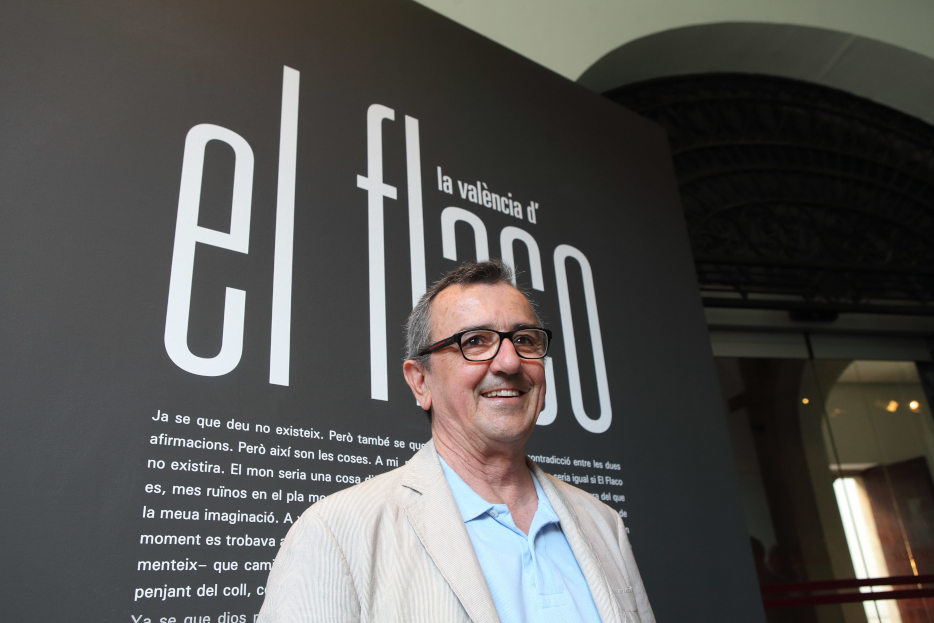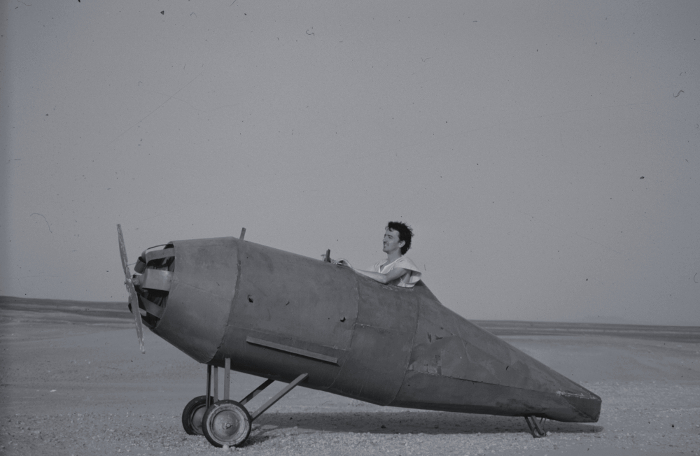
.jpg)
Traditionally, a chronicler compiled facts and costumes, gathered sources and events and was a direct witness of the life of a place. The current daily narrative involves the resounding relying in image, where the visual language becomes essential and the photographer becomes a story builder.

These social tales that were advanced by Bernard Plosu or Walker Evans and have been continued from Spain by authors such as Joan Colom, Luis Baylón, Francisco Moltó or Alberto García-Alix are revealing of a genuine reality that arises from the relationship between the city and its people. From that trace, where the look captures the human portrait, it can be said that the germ of the photographs of José Poveda, El Flaco, would emerge as a stroller of the city in which the fate of many people is intermingled. The lens of his camera immerses us in the social chronicle of a period that is revitalized in each snapshot, despite its belonging in past chapters. The conjugation of the city, the event and the psyche, gives us the opportunity to contemplate Valencia with its light and its shadows, from the vibration of those who beat in it. As a result, the author obtains a heterogeneous, apparently disparate and contradictory route, which in the end assembles order and coherence. The photographic work of El Flaco is presented as a platform to observe the enormous collective effort that Valencian culture and society has made so Valencia is not anymore what Carlos Perez referred as “the Land of Impossible Modernity”,
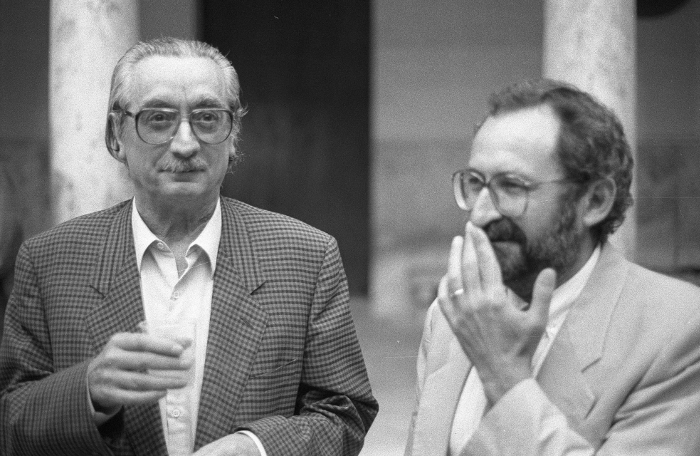
Emblematic places of the day (Los Madriles, Nácher, Lotería Bello, Casa Montaña, Futurama) and the night (La Marxa, La Torna, Cabaret Pachá, Café Malvarrosa), the social collectives, the protests and strikes but, specially, people: Blanquita, Ovidi Montllor, Pepe Rubianes, Rosita Amores, and also Alicia Alonso, José Saramago, Umberto Eco, Catherine Deneuve, Rafael Alberti, Vicent Andrés Estellés, Juan Gil Albert, Matilde Salvador, Mstislav Rostropóvich, Rudolf Nuréyev, Núria Espert, Luis García Berlanga, Manuel Vázquez Montalbán, Emma Cohen, Ricardo Muñoz Suay, Almudena Grandes, Eduardo Arroyo, Carlos Pérez, Anzo, Ramón Gaya, Mariscal, Manuel Hernández Mompó, Monjalés, Michavila, Cualladó, Carmen Calvo, Jarque, Alfaro, Vicente Todolí, Dávila, Rafael Chirbes, Ricard Pérez Casado, Manuela Carmena or Tomás y Valiente. The list of these stories is thus immersed in an anthropological mosaic, in which some visited Valencia and others were already here. The camera of El Flaco, small and discreet, is present in many moments of the nightlife and reminds us of the famous Polaroid of Andy Warhol, which documented so many faces combining the spontaneity and the scenic representation.
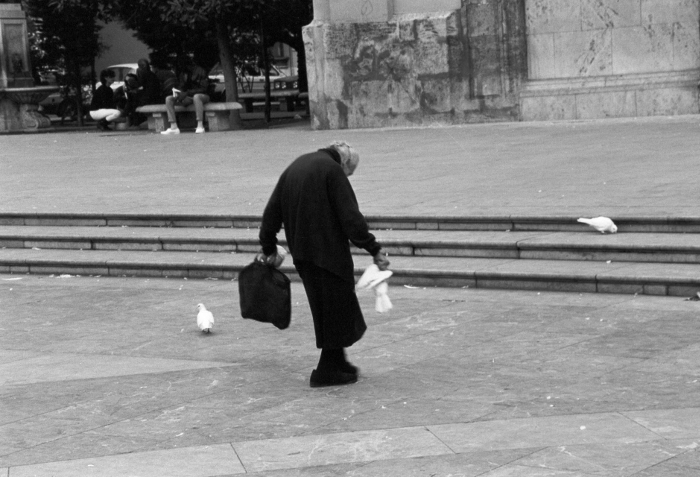
The exhibition La València d’El Flaco (The Valencia of El Flaco), organised by the Office of the Vice-Principal for Culture and Equality, and presented at La Nau Cultural Centre, is composed by more than three hundred photographs and photomontages, comprising the singular urban landscape developed between the significant years of 1980 and 2004, and consists of five sections: Culture, Politics, Society, Night and City
Unlike Las ciudades invisibles (The invisible cities) of Italo Calvino, El Flaco does not invent any space, nor imagine any place other than the present. He does not create a collection of sequential portraits either. The city is not a dream, but he shares with Calvino the reflection of the final sentence of the book: “to seek and recognise who and what, right in hell, is not hell, and to make it last, and to give them space”.
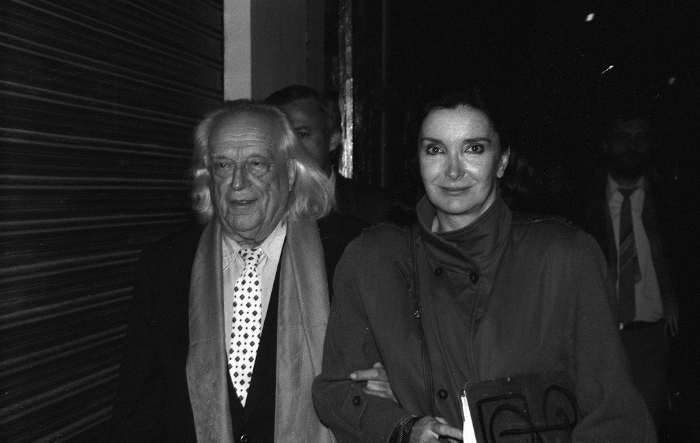
The project that is presented from the Universitat de València has an almost polyhedral morphology, with several edges linked to the processes of the city and the life of its people. In this sense, we highlight the interesting work carried out by the authors of the texts, Carmen Alborch, Alfons Cervera, Carles Gámez, Javier de Lucas and Abelardo Muñoz, as a traveling companion of the photographer, addressing from a political, social and cultural point of view a personal approach to the author and the repercussion of his photographs in our time.
And within this particular universe, the cloister of the La Nau Cultural Centre appears, repeatedly, as an emblematic scene for portraits: Joan Fuster, Mario Benedetti, Jesús Martínez Guerricabeitia, Vicent Ventura, Ernest Lluch, José Luis Sampedro, Doro Balaguer, Enric Valor, Paco Bascuñán, Pilar Miró, Gonzalo Suárez, Josep Piera, Joan Romero, Ciprià Císcar… All of them are personalities who participated strongly in the construction of the current political and socio-cultural landscape. A map of testimonies, gestures and faces that rejects the forgotten meaning of Eufemia, the city drawn by Calvino, where the memory is changed in each solstice and every equinox. Through this project, the Universitat de València wants to show its appreciation to the testimonial work of El Flaco as the narrator and guardian of those stories. Giving value to his work during these last three decades also implies recognising the personalities and makers of the cultural history of Valencia.
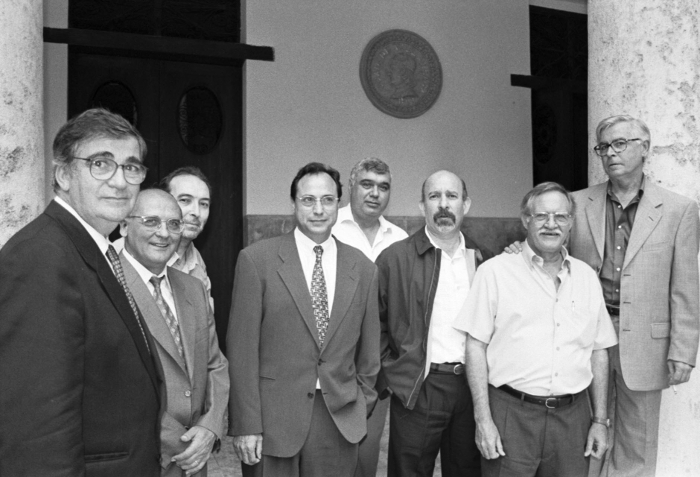
Images gallery


